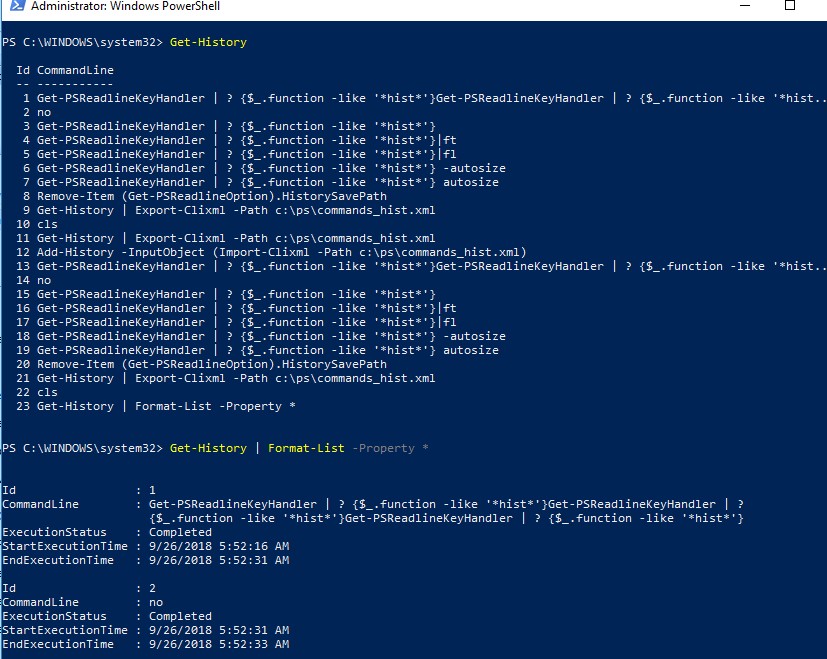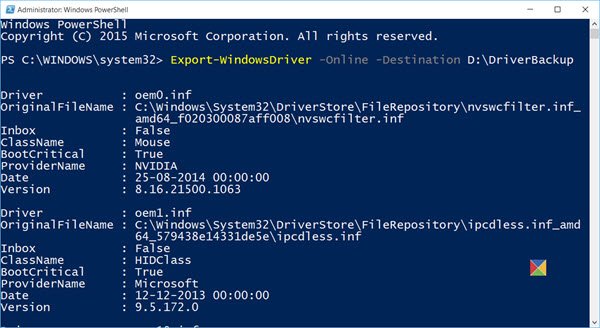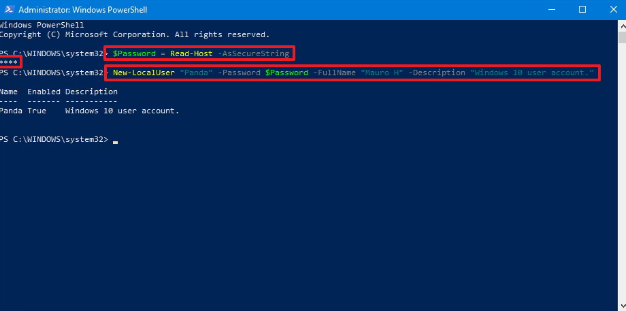

- Windows 10 powershell commands code#
- Windows 10 powershell commands series#
- Windows 10 powershell commands windows#
CMD doesn’t support aliasing by default however, there are certain workarounds available. All you have to do is put a pipeline operator between the two cmdlets, and execute them at once: Cmdlet-X | Cmdlet-Y AliasingĪliasing is the process of defining nicknames for commands or cmdlets.
Windows 10 powershell commands series#
This means that you can create a series of commands, with each command feeding its output to the next one.įor example, let’s suppose you want to pass the output of cmdlet X as the input to cmdlet Y. Much like other powerful shells (Bash in Linux), PowerShell gives you the ability to pipe/share input/output across cmdlets. Object-orientedĬmdlets follow all the principles of object-oriented programming, which contributes to their ease-of-use and interoperability.

Windows 10 powershell commands code#
Defining your own cmdlet class is also straightforward as per Microsoft, you only need a dozen lines of code to write a custom cmdlet. They’re easy to include in batch scripts, as providing them input and processing their outputs is very simple. Such level of flexibility and convenience isn’t available with Command Prompt.īenefits of PowerShell over Command Prompt Automation made easyĬmdlets make automation effortless.
Windows 10 powershell commands windows#
Time-consuming tasks like registry management and Windows Management Instrumentation (WMI) can be streamlined using cmdlet-powered scripts. if you pass -AddressFamily IPv6 to the cmdlet, you’d only be shown the IPv6 address configuration.Īdministrators can use various cmdlets in their scripts to automate tasks and configure system settings on-the-go. On PowerShell, you have advanced cmdlets, like Get-NetIPAddress, which allow you to filter your output based on your needs. However, you can’t specify any other inputs. On CMD, you can use the ipconfig /all command to get the IP address, and other information like DNS mask and network adapter etc. This makes it much easier to write dynamic queries with cmdlets, and filter outputs easily something that you can’t do with Command Prompt.įor example, both CMD and PowerShell give you the ability to view the IP address of your machine. NET classes, which can take various inputs, and produce objects as output, instead of just plain text. PowerShell has an advanced cmdlet (pronounced “command-let”) instruction set, which is a perfect fit for modern-day automation and administration.Ĭmdlets are native PowerShell commands which allow users to execute various OS-level operations.

PowerShell is a much more advanced shell that can do all that CMD does, along with so much more. Command Prompt is simply a CLI (command-line interface) to execute console programmes and the output is displayed as plain text. PowerShell and Command Prompt (CMD) are fundamentally different from each other.


 0 kommentar(er)
0 kommentar(er)
